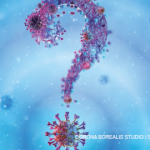NEW YORK (Reuters Health)—Clinicians’ expectations of the benefits and harms of a wide range of treatments and tests are rarely accurate, according to a new study.
“There was variation—with benefits and harms sometimes being overestimated and sometimes being underestimated; but there was a tendency for clinicians to more often underestimate (rather than overestimate) harms and overestimate (rather than underestimate) benefits,” Dr. Tammy Hoffmann tells Reuters Health.
“We know from our earlier research that patients also have inaccurate expectations, and most people think that interventions will help more and harm less than they actually do.1 So if both clinicians and patients are bringing inaccurate expectations into the consultation, then the potential for misguided, ill-informed decisions is very high,” Dr. Hoffmann says.
Dr. Hoffmann and Dr. Chris Del Mar of the Centre for Research in Evidence-Based Practice at Bond University in Gold Coast, Australia, reviewed 48 studies that quantitatively assessed clinicians’ expectations of the benefits and/or harms of any treatment, test or screening test. Twenty studies focused on treatment, 20 on medical imaging and eight on screening.
Collectively, the studies had data for roughly 13,000 clinicians, according to the Jan. 9 JAMA Internal Medicine report.2
For studies comparing benefit expectations, 50% or more of clinicians provided a correct estimate for only three of 28 outcomes (11%)—namely, reduction in stroke risk with aspirin therapy for atrial fibrillation (AF); risk reduction of cardiovascular events with statin therapy; and reduction in breast cancer mortality from mammographic screening.
For studies that provided overestimation or underestimation data (22 outcomes), 50% or more of doctors overestimated benefit for seven outcomes (32%) and underestimated benefit for two outcomes (9%).
For studies comparing expectations of harm, most doctors correctly estimated harm for only nine of 69 outcomes (13%). Most doctors underestimated harm for 20 (34%) and overestimated harm for three (5%) of the 58 outcomes.
“The finding of more instances of clinicians underestimating harms and overestimating benefits than the opposite provides some support for the existence of therapeutic illusion (‘an unjustified enthusiasm for treatment on the part of both doctors and patients’), which is a proposed contributor to the inappropriate use of interventions,” the authors note in their paper.
Dr. Hoffmann tells Reuters Health, “The expectations that clinicians have about how much a treatment or test might help or harm a patient can drastically influence the decisions they make – such as whether or not to offer the test/treatment. What they tell the patient about the test or treatment is also influenced by how much they think it will help or harm. Patients may sometimes be receiving inaccurate information, which in turn can influence the decisions that they make. As a consequence, patients might be receiving interventions that won’t help and may harm them; alternatively they might be missing out on interventions that could help them.

